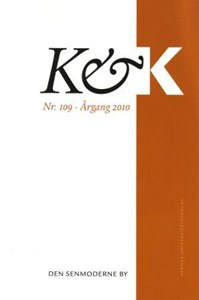POTSDAMER PLATZ - MYTEN OM MIDTEN
DOI:
https://doi.org/10.7146/kok.v38i109.15790Nøgleord:
the city, BerlinResumé
POTSDAMER PLATZ
The city square has been the organising centre for urban development in the western world, but the history of Berlin can be told as a quest narrative, the search for such an organising centre. This article tells the story of Potsdamer Platz, which can be viewed as the centre of the Prussian (and later German) capital. In the age of the Baroque Potsdamer Platz was connected to one of the new geometrical squares (an Octogon), which emphasised the aristocratic order. In the age of Romanticism the architect Karl Friedrich Schinkel used it in his efforts to reshape the city as a panoramic cityscape. In the Weimar Republic Potsdamer Platz gained a mythical status. It became the symbol of Berlin as a “world city”; and writers, painters and filmmakers excelled in artistic comments on this symbol. The Wall put an end to the glorious history of this “heart of Berlin”, but shortly after 1989 planners and politicians embarked on a project to make the city’s heart beat once again. In the age of Postmodernism, however, the city square has become a history of making exteriors into interiors, of replacing the physical space by mediated space, of “Disneyfication”; and as this article shows, this tendency also characterises the new and renewed Potsdamer Platz.
Downloads
Publiceret
Citation/Eksport
Nummer
Sektion
Licens
Tidsskriftet følger dansk ophavsret.





